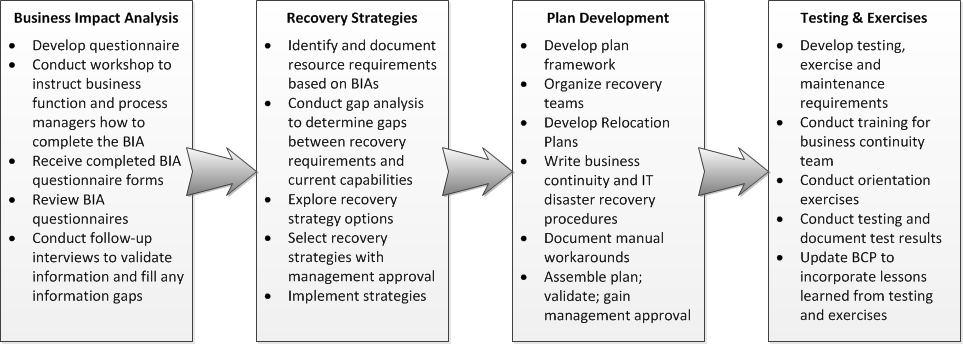
 It’s the phone call no business owner wants. Catastrophe has struck: a giant Kaiju monster has attacked the one square city block your company’s office sits on, and now a 1973 Chevy Impala is embedded in your 5th floor server room. What’s a CEO to do? Short of acquiring a time machine: plan ahead for disaster, and develop business continuity plan for just this scenario. Or — okay, maybe not this exact disaster scenario, but certainly the ones you can reasonably anticipate happening you. The Four Horsemen of the Apocalypse taking a joy-gallop through your break room? Probably not. An earthquake, fire, breach, or flood? Absolutely.
It’s the phone call no business owner wants. Catastrophe has struck: a giant Kaiju monster has attacked the one square city block your company’s office sits on, and now a 1973 Chevy Impala is embedded in your 5th floor server room. What’s a CEO to do? Short of acquiring a time machine: plan ahead for disaster, and develop business continuity plan for just this scenario. Or — okay, maybe not this exact disaster scenario, but certainly the ones you can reasonably anticipate happening you. The Four Horsemen of the Apocalypse taking a joy-gallop through your break room? Probably not. An earthquake, fire, breach, or flood? Absolutely.
When it comes to your IT infrastructure and data, the beating heart of your business, you need a concrete plan. Winging it in the aftermath of a cyber attack or a tropical storm is not an option; not when so much is on the line.
In a 24/7 economy, even minutes of down time might hurt your bottom line. If you’re not prepared for the worst, you’re gambling a lot more than just revenue — there’s worker productivity, vital company records, your office space, inventory… any resources you require to run, if affected, could cost you dearly.
One of the biggest? Information technology.
Disaster recovery for business puts the control back in your hands, even if chaos demands otherwise. Folding IT into your broader continuity plan ensures that even if an important system goes down, or if 20 terabytes of data get eaten by an overnight electrical surge, you can just keep swimming without ever breaking stride.
Source: https://www.ready.gov/business/implementation/continuity
There are four main steps to developing an effective business continuity plan:
- Perform a business impact analysis
- Explore recovery strategy options
- Develop the plan
- Test the plan, and continue to do so periodically to ensure its effectiveness.
Determining what your company can stand to lose, and what it resources cannot function without, is the core purpose of the Business Impact Analysis — the first major step to designing a recovery plan that meets your needs. Since every company is unique, no one recovery plan will look the same.
But before you can know what resources you’ll require, you must imagine the worst case scenario. When it all goes wrong, what might the impact be (bearing in mind that the effects of a new-hire accidentally downloading ransomware from a chain email about kittens will likely differ from those of a mid-blizzard roof collapse.
If your email went down company-wide tomorrow, what would you do? What might it cost you if you went an entire day without this vital communication method. Could you get by? Maybe you could. But what if it were your entire network instead, or even just a fraction of it? A giant Kaiju monster lobbing a 1973 Chevy Impala into your office as if it were one of your toddler’s Hot Wheels is not a terribly likely scenario, but a crashed server is.
As companies rely more and more on technology in an effort to improve agility and stay one step ahead of their competitors, they’re going to have to accept the possibility that one day it could all go terribly wrong — and decide, long in advance, exactly what they would do about it.
At the 2008 Olympics, mere seconds into his bid to win the 10th gold of his career, Michael Phelps’ goggles began to fill with water. By the time he spun off the wall for his fourth and final lap of the 200-meter butterfly, he might as well have been swimming in the dark. He was, by all intents and purposes, completely blind.
Except… he wasn’t. Though no one in the stands could have ever known it, this is something he’d prepared for. For more than a decade he has fallen asleep visualizing this race; any race; every race — every breath, every kick, every possible thing that could ever go wrong. Years before he would dive headfirst into the history books, his coach had turned the lights out on him one practice. His task that night: adapt, overcome; do a run in pitch black. So by the time he Phelps made his splash in Beijing, he knew every stroke that lay before him and that wall. Nineteen or twenty, he estimated; in fact, it was twenty-one.
Michael Phelps won his 10th Olympic gold, quite literally, with his eyes closed — and beat his own world record in the process.
Though he could have never anticipated the stakes or outcome at the time, he had nonetheless planned ahead for just such an occasion. Just in case.
There is quite a lot that goes into building a continuity plan for your business, but with the right company to coach you through the process, you can be ready for anything, anytime — all of the time.
JNT TEK offers offsite data backup strategies for businesses, cloud storage options, and customized plans to make recovery a breeze.
Peace of mind goes a long way when it comes to business, and as one of this country’s foremost disaster recovery service providers, we’ll work with you to design and implement the perfect solution — so you can always ensure you have it, and are never swimming blind.
Contact JNT TEK today for assistance in the development of your IT business continuity plan.





CONNECT WITH US!